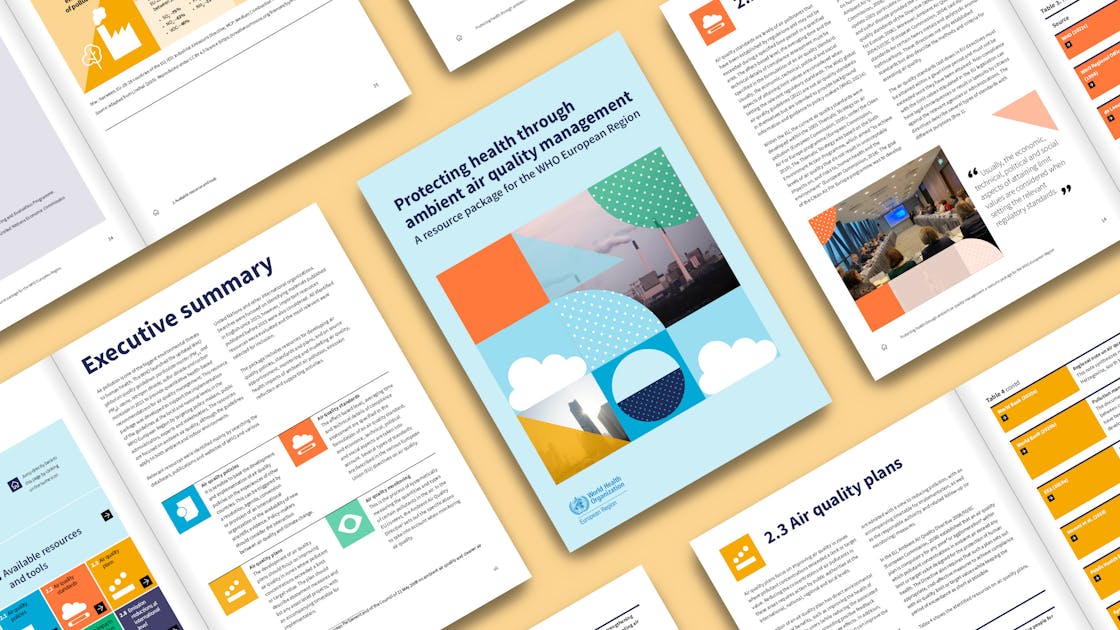Protecting health through ambient air quality management: A resource package for the WHO European Region
WHO has been developing air quality guidelines for decades in response to the major global health challenge posed by ambient air pollution – in 2019 alone, WHO estimated that 4.2 million premature deaths worldwide were attributable to ambient air pollution. This resource package was released by the WHO European Region in 2023 as a guide to help countries implement the latest air quality guidelines.
The brief
Lushomo was commissioned to design this 100-page, resource-dense publication. Because the document included extensive health-based recommendations for air quality management, and links to a large number of resources and tools, the aim was to make it as accessible and navigable as possible, at all points considering how to help users identify and locate the specific resource they need in the shortest possible time.
Our approach
We started by developing a distinctive colour and visual symbol for each of the document’s 11 thematic areas. These were then used consistently in summary infographics to clarify key processes and concepts, and section openers to guide users to specific topics and resources. We also included additional navigation, such as a clickable table of contents and embedded links for seamless jumping between sections.
Visual language
While it does align with WHO’s house branding (in terms of layout, fonts and dominant colours), this publication has its own unique colour palette and design elements that bring the technical content to life and enhance the user experience. These include a geometric design combining colour, typography and versatile patterns and shapes.
The deliverables
The document is available as an interactive downloadable PDF on the WHO site but was also delivered in high-resolution print form.
The highlights
This resource package is still in use as a practical support tool for the implementation of the WHO global air quality guidelines for particulate matter (PM2.5 and PM10), ozone, nitrogen dioxide, sulfur dioxide and carbon monoxide in Member States of the WHO European Region.











